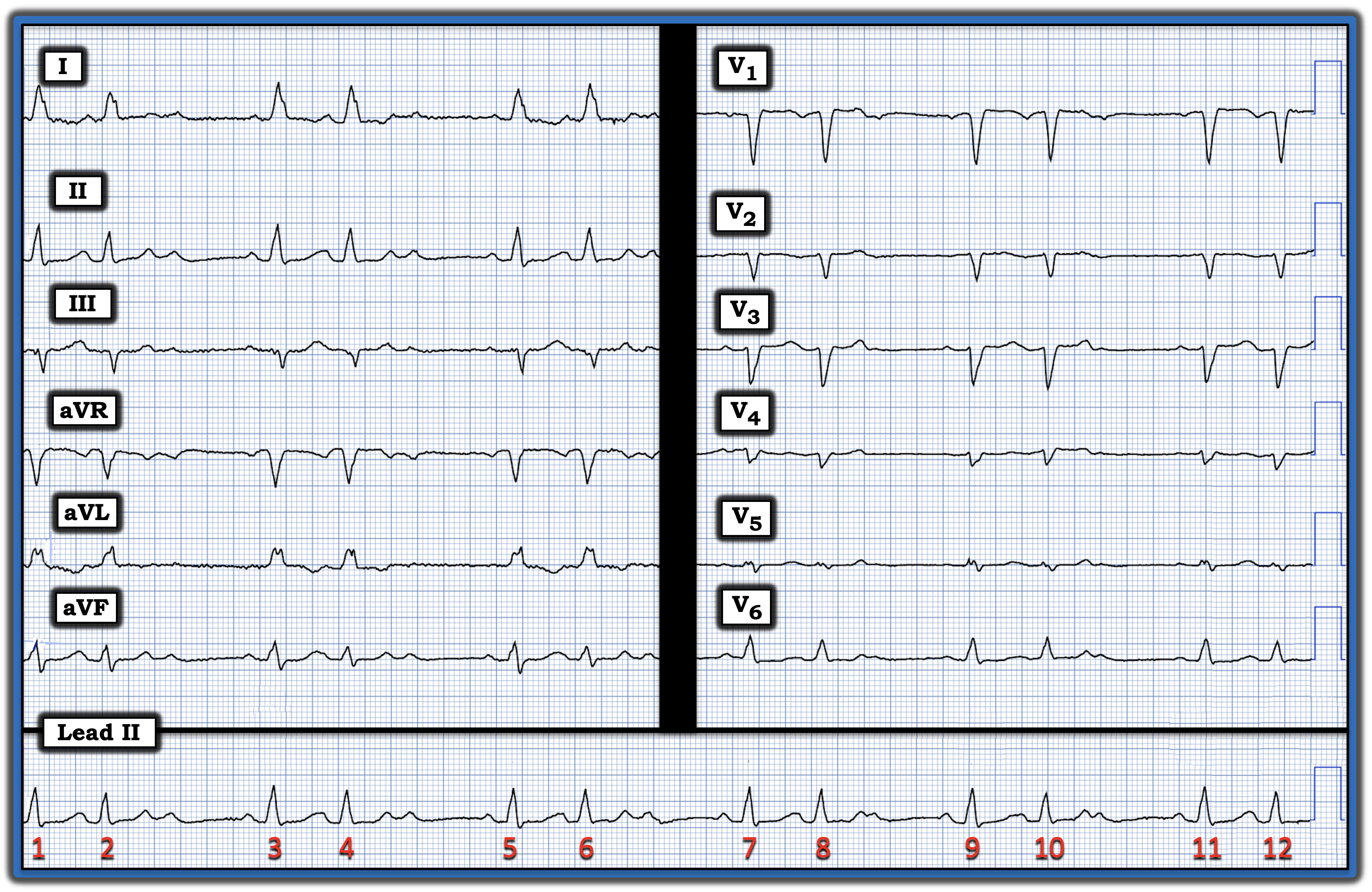What Kind of Block?
June 15, 2025
By Ken Grauer, MD
The electrocardiogram in the figure was obtained from an older adult who presented for evaluation of syncope. What kind of atrioventricular (AV) block is present? Or is the rhythm something other than an AV block?

Interpretation: The long lead II rhythm strip in the figure is remarkable for the presence of “group” beating (i.e., repetitive two-beat groups separated by nearly equally spaced pauses)..
- P waves are present! These P waves are best seen before each of the odd-
numbered beats that end a pause. The fact that the PR intervals before beats 3, 5, 7, 9, and 11 are normal and equal indicates that each of these beats are being conducted. - Close inspection of the T waves of beats 1, 3, 5, 7, 9, and 11 reveals a T wave morphology that continually changes. This is because P waves are partially hidden within these T waves. Since the atrial rate varies slightly, these partially hidden P waves occur at slightly different moments within the preceding T waves.
- Each of the two-beat groups ends with an on-time, non-conducted P wave that occurs just after the T waves of beats 2, 4, 6, 8, and 10.
Putting this all together:
- The underlying QRS complex in today’s tracing is wide — with a QRS morphology consistent with a left bundle branch block.
- There is a fairly (but not completely) regular atrial rhythm in the long lead II rhythm strip. The same pattern repeats in each of the two-beat groups. Although P waves are partially hidden within the T waves of beats 1, 3, 5, 7, 9, and 11, the PR interval before each of the QRS complexes in this rhythm strip appears to be constant. An on-time but non-conducted sinus P wave follows the T wave of beats 2, 4, 6, 8, and 10.
Impression: The rhythm in today’s tracing is a second-degree AV block of the Mobitz II type, with 3:2 AV conduction in each of the two-beat groups.
- Compared to Mobitz I, the Mobitz II form of second-degree AV block is much less common. That said, it is important to recognize Mobitz II because of its much greater tendency to develop into a complete AV block and/or ventricular standstill.
- Today’s patient received a permanent pacemaker.
Note: For more information about this case, visit https://tinyurl.com/KG-Blog-465.
The electrocardiogram in the figure was obtained from an older adult who presented for evaluation of syncope. What kind of atrioventricular (AV) block is present? Or is the rhythm something other than an AV block?
You have reached your article limit for the month. Subscribe now to access this article plus other member-only content.
- Award-winning Medical Content
- Latest Advances & Development in Medicine
- Unbiased Content